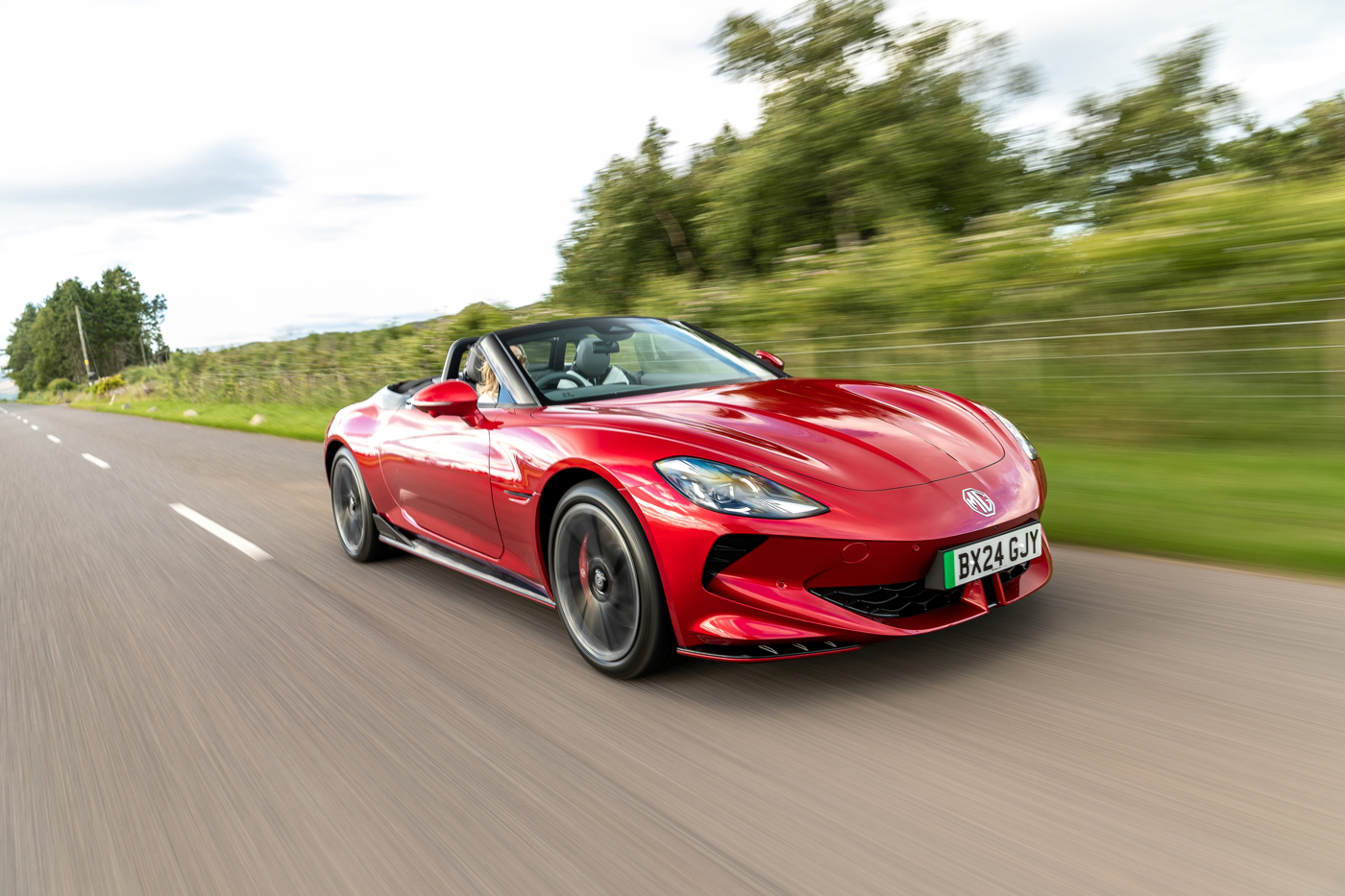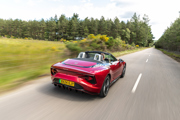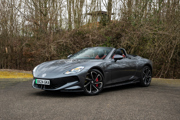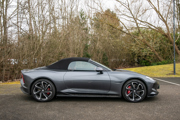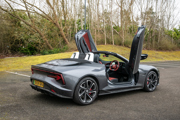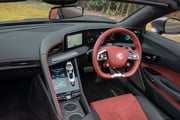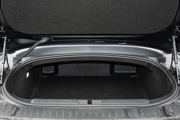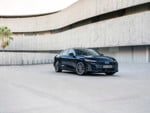Review
MG might have a history of making small sports cars but ‘new’ MG – the one owned by Chinese automotive giant SAIC – is very much focused on affordable, practical electric cars.
So, what on earth is it doing making a two-seater convertible that costs north of £50,000 and can accelerate from 0-60 in less than four seconds? Well, the Cyberster is very much a halo model. Built to showcase what MG’s engineers can do if the reigns are loosened and to amplify credibility for the marque that is quickly becoming the go-to in the value segments.
And if you’re a perk car driver that doesn’t do many business miles and has no real need for practicality, the Cyberster could well be a viable company car choice. Its running cost position, after all, is no more extravagant than that of a perfectly sensible BMW i4 eDrive 35 M Sport. Check it out on the Fleet News Runnning Cost Calculator.
As a fully electric car, the Cyberster enjoys a 3% benefit-in-kind tax rate for the 2025/26 tax year and therefore brings tax bills of less than £30 per month for a 20% taxpayer.
It’s also, and I use this phrase loosely, ‘reasonably priced’. The Cyberster isn’t exactly cheap: it’s £54,916 for the single motor model and £59,916 for the dual motor version. But, it’s a seriously quick, high-tech and eye-catching sports car. Plus, there’s nothing else that competes with it, currently. Oh, apart from the £180,000 Maserati Gran Cabrio Folgore.
With remote-controlled electrically opening scissor doors, the Cyberster steps well outside MG’s comfort zone as a budget brand. It looks like it costs twice as much as it does and the performance is just as impressive.
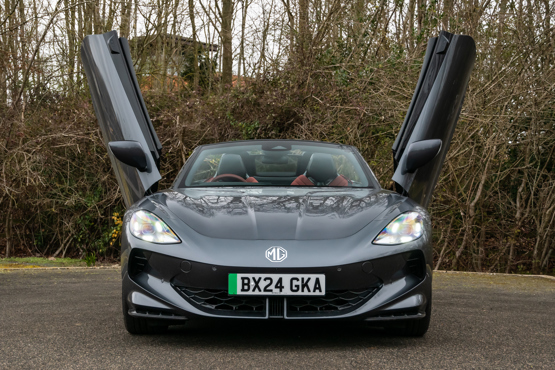
Opt for the dual motor GT and you’re in command of 510PS – enough for a 0-62mph dash in 3.2 seconds. Yet, the WLTP range of 276 miles means the Cyberster is just as capable as some of the market’s best-selling electric cars.
The single motor Trophy is still suitably rapid, managing 0-62mph in five seconds and providing a 340PS output. It also manages a longer range of up to 316 miles.
Straight line speed is immense, especially in the GT. The power is unlocked in stages, depending on which drive mode you’ve selected. S-Sport – activated via a button on the steering wheel – delivers maximum potential. The heavy battery, built into the chassis, contributes to a low centre of gravity and adds stiffness. Add in darty steering and the Cyberster is fun-to-drive.
The interior is driver-focussed, providing an array of four screens. There’s three that surround the steering wheel, for instruments and infotainment. The fourth display, on the dashboard contains the climate control and vehicle settings.
It’s futuristic and concept-car like, adding to the car’s premium feel. Unfortunately, the user experience isn’t quite up there with the likes of Audi, BMW or Porsche. Two touchscreens flank the central instrument cluster, offering a variety of displays from sat-nav or radio to weather reports and trip information. The problem is they’re so crammed in that part of the displays is obscured by the steering wheel.

Then there’s the lower screen. The climate functions are pretty straightforward but delving into the settings is a minefield. Most notably the MG Pilot settings. Trust me you’ll need these. This is where you can adjust the parameters of MG’s utterly overcomplex driver assistance aids. There’s a myriad of settings for each feature and we found almost all of the ‘aids’ to be far to oversensitive and intrusive while driving.
By far the worst is the driver distraction warning, which uses a small camera above the steering wheel to decide if you’re paying attention or not. The problem is it simply doesn’t work. Whether you’re navigating a car park or cruising along a dual carriageway, it just continually berates you with a tirade of bongs and flashing warning messages. And you CANNOT turn it off.
Oh, and those electric doors…. They’re too slow, too cumbersome and too fiddly to operate.
Yet, with the roof down and the Bose sound system cranked up, the annoyances fade away. The Cyberster is simply great fun and it attracts a lot of attention.
Our time in the GT netted an average efficiency of 2.4mi/kWh. Given the Cyberster’s 74.4kWh battery, that suggests a theoretical range of just 180 miles. EV database reckons 250 miles is possible, and it might be if you drive particularly carefully.
DC fast charging is possible at 144kW, so a 10% - 80% charge will take 39 minutes, while AC charging power is up to 11kW.
So, the electric powertrain technology isn’t cutting edge and neither is the infotainment. Performance is blisteringly fast and MG has done a good job on the chassis. The styling is excellent, too, although the interior is cramped and there’s very little boot or storage space.
Here lies the dilemma. The Cyberster isn’t cheap and cheerful enough to be a typical sports car but it’s not technologically advanced enough to be a true premium segment contender. As a result, it sits in no-man’s land. You can have one for the same money as a sensible electric saloon, even though its something quite exotic, IF you can live with the compromises.
Specs
| Manufacturer | MG Motor UK |
| Model | Cyberster |
| Specification | MG Motor UK Cyberster Convertible 250kW Trophy Single Motor 77 kWh 2dr Auto |
| Model Year | 2024.00 |
| Annual VED (Road tax) | £10 |
| BIK List Price | £54,930 |
| Range | 316.00mile(s) |
| CO2 | N/A |
| BIK Percentage | 2% |
| Insurance Group | N/A |
| CC | 1 |
| Fuel Type | Electric |
| Vehicle Type | Sports/coupe/convertible |
| Luggage capacity (Seats up) | N/A |
| Doors | 2 |
Running Costs
| P11D | £54,930 |
| Cost per mile | 57.67ppm |
| Residual value | £24,600 |
| Insurance group | N/A |
| Fuel Type | Electric |
| Cost per mile | 173.41ppm |
| Fuel | 2.41ppm |
| Depreciation | 168.10ppm |
| Service maintenance and repair | 2.90ppm |
Info at a glance
-
P11D Price
£54,930
-
MPG
N/A (WLTP) -
CO2 Emissions
N/A -
BIK %
2% -
Running cost
3 Year 60k : £24,600 4 Year 80k : £19,825 -
Fuel Type
Electric -
Range
316.00mile(s)



